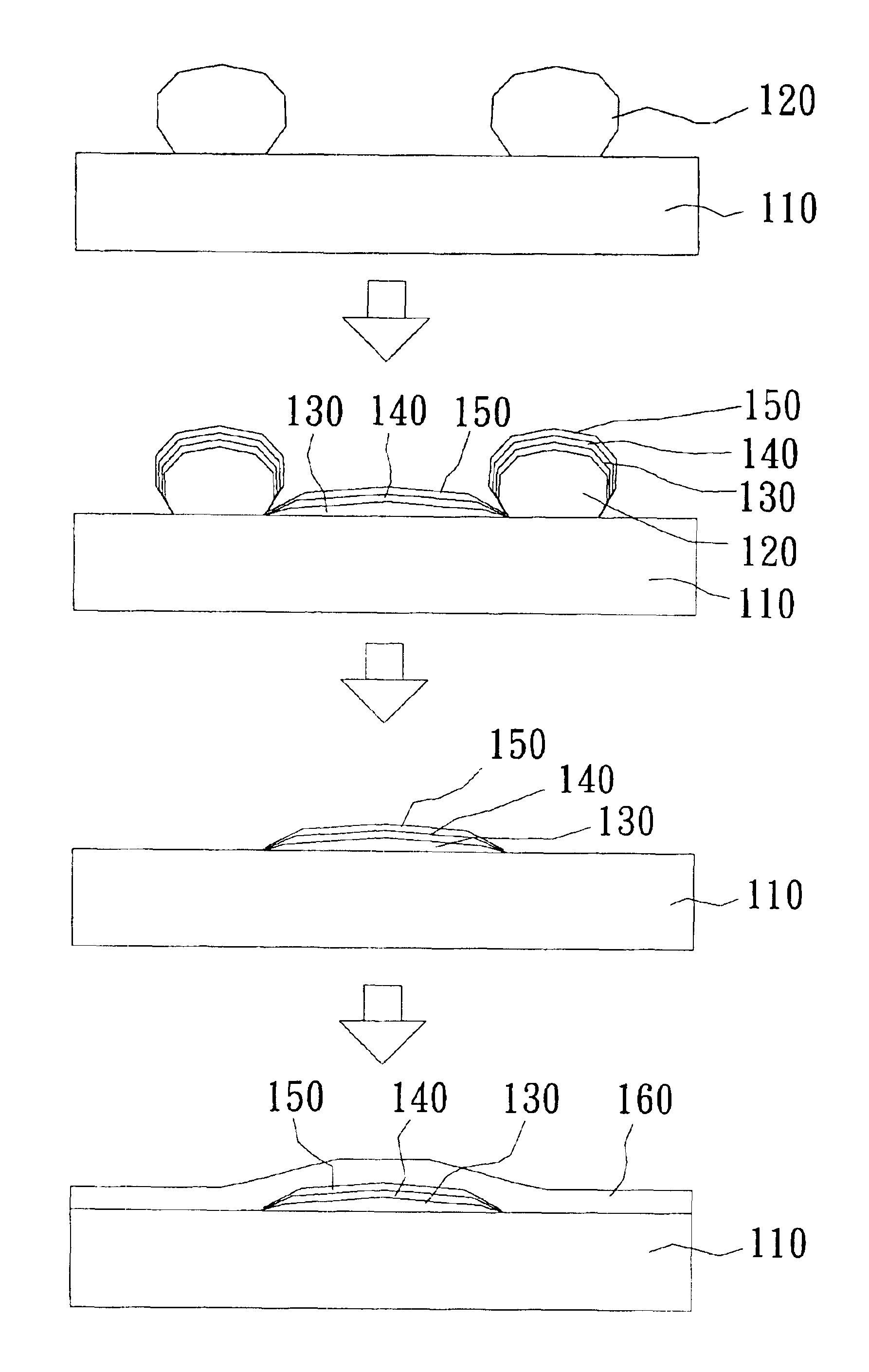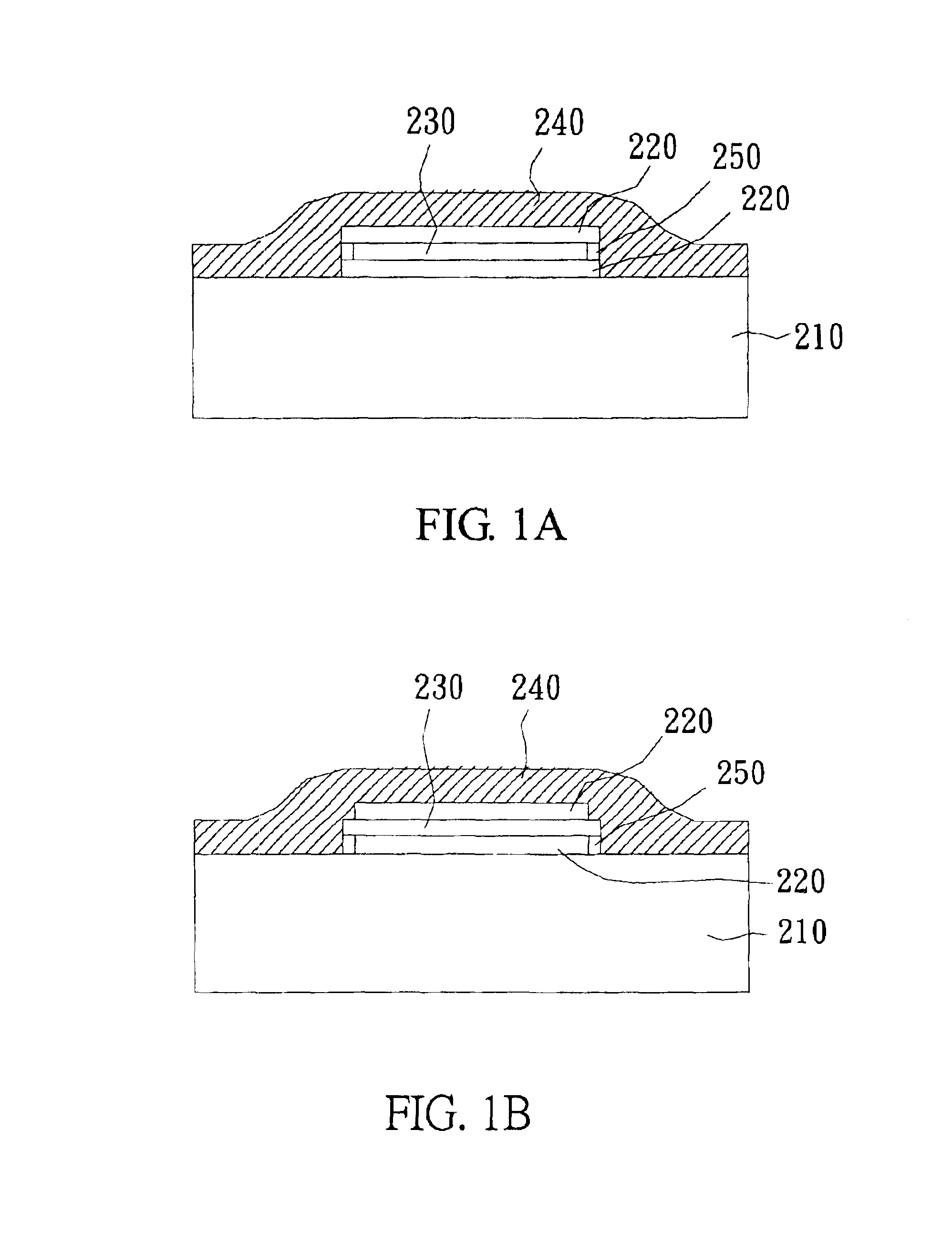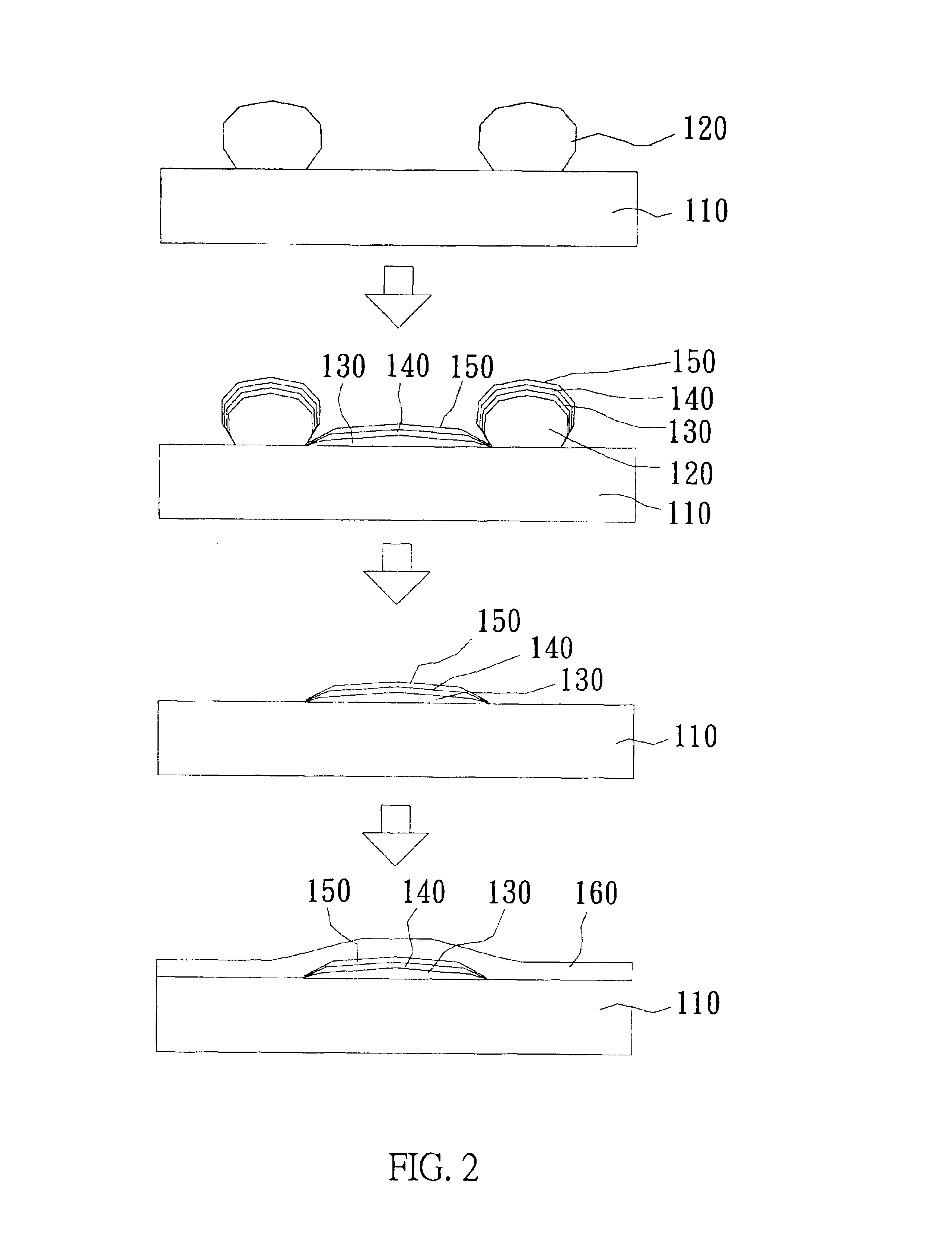Method for forming a conductive layer
a conductive layer and conductive technology, applied in the field of forming a conductive layer, can solve the problems of poor step coverage and voids, the difficulty of the etching step consequently increasing, and the inability to control the taper angle formed by the etching process to remain within the specification limits, so as to reduce the complexity of the etching process, and reduce the difficulty of the etching step.
- Summary
- Abstract
- Description
- Claims
- Application Information
AI Technical Summary
Benefits of technology
Problems solved by technology
Method used
Image
Examples
example 1
[0016]With reference to FIG. 2, there is shown a perspective view of the method of a preferred embodiment of the present invention. First, a substrate 110 is provided, wherein the surface of substrate 110 is made of glass, silica nitride, silica oxide, amorphous silicon, crystalline silicon, doped silicon, metals, metal nitrides, polymers, or organic light-emitting materials. Then, a photoresist layer is formed on the substrate 110, which is subsequently baked, exposed, and developed to form a patterned photoresist layer 120 thereon; wherein the parameters of the photolithography process, such as the thickness or composition of the photoresist, the energy of exposure, the depth of focus, the temperature of baking, or the time for developing are adjusted to form the patterned photoresist layer 120 having an undercut. Preferably, the patterned photoresist layer 120 has a cross section of a mushroom shape and is made of a negative photoresist. After that, a multilayer metal composed of...
example 2
[0018]With reference to FIG. 3, there is shown a perspective view of the method of another preferred embodiment of the present invention. With reference to FIG. 3, there is shown a perspective view of the method of another preferred embodiment of the present invention. First, a substrate 310 is provided, wherein the surface of substrate 310 is made of glass, silica nitride, silica oxide, amorphous silicon, crystalline silicon, doped silicon, metals, metal nitrides, polymers, or organic light-emitting materials. Then, a photoresist layer is formed on the substrate 310, which is subsequently baked, exposed, and developed to form a patterned photoresist layer 320 thereon; wherein the parameters of photolithography process, such as the thickness or composition of the photoresist, the energy of exposure, the depth of focus, the temperature of baking, or the time for developing are adjusted to form the patterned photoresist layer 320 having an undercut. Preferably, the patterned photoresi...
PUM
| Property | Measurement | Unit |
|---|---|---|
| Angle | aaaaa | aaaaa |
| Electrical conductor | aaaaa | aaaaa |
Abstract
Description
Claims
Application Information
 Login to View More
Login to View More - R&D
- Intellectual Property
- Life Sciences
- Materials
- Tech Scout
- Unparalleled Data Quality
- Higher Quality Content
- 60% Fewer Hallucinations
Browse by: Latest US Patents, China's latest patents, Technical Efficacy Thesaurus, Application Domain, Technology Topic, Popular Technical Reports.
© 2025 PatSnap. All rights reserved.Legal|Privacy policy|Modern Slavery Act Transparency Statement|Sitemap|About US| Contact US: help@patsnap.com



